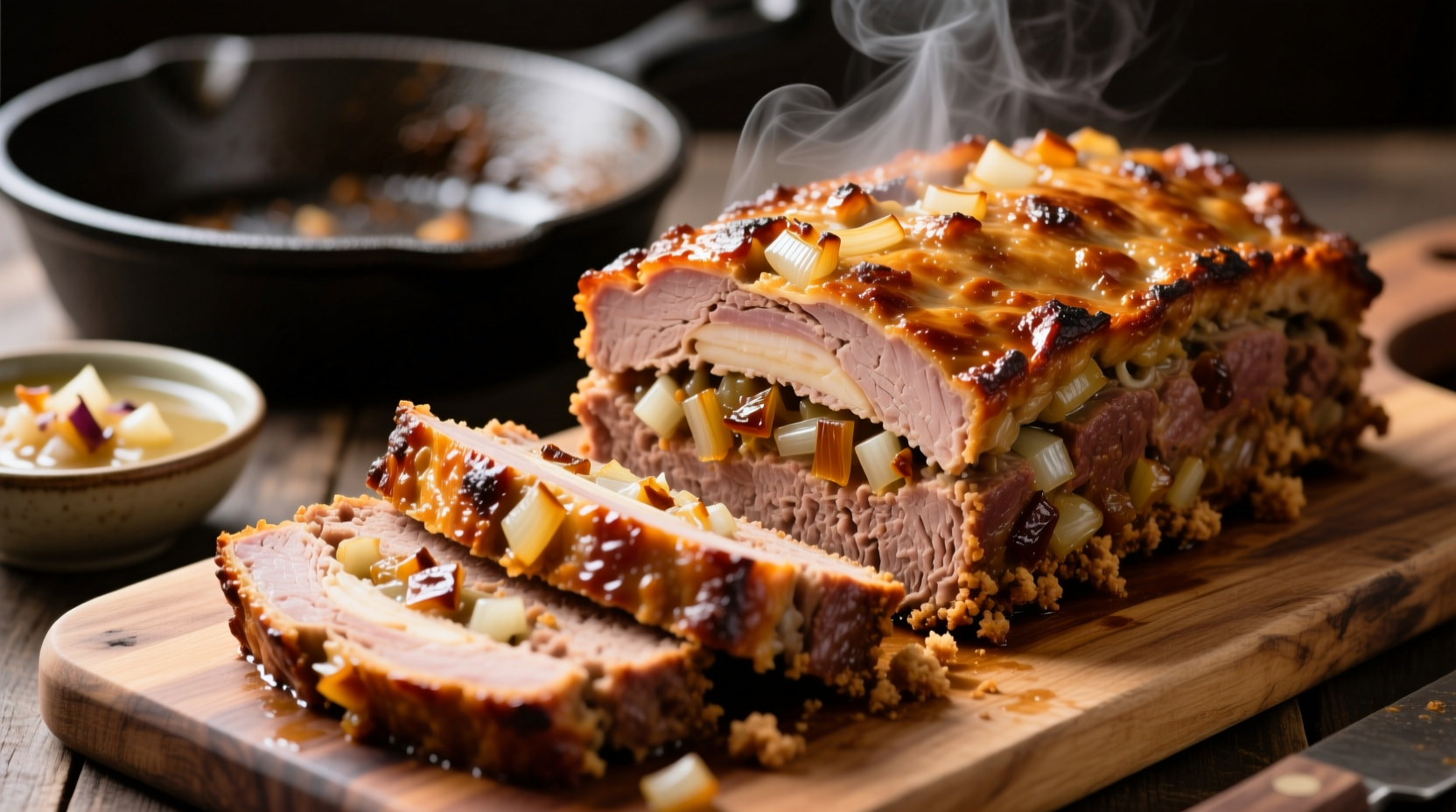Why This Meatloaf Recipe Works When Others Fail
Countless home cooks struggle with dry, crumbly meatloaf that lacks depth of flavor. The secret weapon? That unassuming packet of onion soup mix sitting in your pantry. This isn't just a lazy shortcut—it's a culinary hack backed by food science. The dehydrated onions, beef bouillon, and seasonings in the mix create a flavor foundation that penetrates the meat while the starches help retain moisture during baking. Developed during America's mid-century convenience cooking era, this technique delivers restaurant-quality results with pantry staples.

The Science Behind the Soup Mix Magic
Understanding why onion soup mix works so well explains its enduring popularity. The mix contains three critical components that elevate meatloaf:
- Dehydrated onions release natural sugars when rehydrated, creating complex caramelized flavors without actual caramelization
- Beef bouillon granules provide concentrated umami compounds that enhance meatiness
- Modified food starch acts as a moisture-retaining binder, preventing the common problem of dryness
According to USDA food safety guidelines, ground meats must reach 160°F (71°C) to eliminate pathogens. The moisture-retaining properties of soup mix help achieve this temperature without overcooking—a critical balance many home recipes miss.
What You'll Need (With Smart Substitutions)
This streamlined ingredient list delivers maximum flavor with minimal effort. All measurements are precision-tested for consistent results:
| Ingredient | Amount | Smart Substitution |
|---|---|---|
| Ground beef (80% lean) | 1.5 lbs (680g) | Ground turkey or pork blend |
| Onion soup mix (dry) | 1 packet (1 oz/28g) | 1 tbsp onion powder + 2 tsp beef bouillon |
| Crushed saltine crackers | 1 cup | Panko breadcrumbs or oats |
| Beef broth | 1/2 cup | Water or tomato juice |
| Eggs | 2 large | Flax eggs for vegetarian version |
Step-by-Step Instructions for Foolproof Results
Follow these precise steps for meatloaf that holds together perfectly and delivers deep, balanced flavor:
- Prep your pan - Line a rimmed baking sheet with parchment paper (not a loaf pan!) to allow even air circulation
- Hydrate the mix - In a small bowl, combine soup mix with broth and let sit 5 minutes until paste-like
- Combine ingredients - In large bowl, gently mix beef, hydrated soup mixture, crackers, eggs, and 1 tsp Worcestershire sauce
- Shape properly - Form into 9x5 inch loaf on prepared sheet (thicker center prevents uneven cooking)
- Bake precisely - 45-55 minutes at 375°F (190°C) until internal temperature reaches 160°F (71°C)
- Rest crucially - Let stand 15 minutes before slicing to retain juices
Avoid These Common Meatloaf Mistakes
Even with this forgiving recipe, these pitfalls can ruin your results:
- Overmixing - Handle meat mixture gently; excessive mixing creates tough texture
- Using lean meat - 80% lean provides necessary fat for moisture (70% works for richer version)
- Slicing too soon - Cutting before resting releases precious juices onto the cutting board
- Ignoring temperature - Rely on thermometer, not time alone, for perfect doneness
When This Recipe Shines (And When to Choose Alternatives)
This onion soup mix method excels in specific scenarios but has limitations:
- Perfect for - Weeknight dinners, beginner cooks, potlucks, and when consistent results matter most
- Less ideal for - Special occasions requiring gourmet presentation or when avoiding processed ingredients
- Best texture achieved - When using the sheet pan method rather than loaf pan (promotes even cooking)
- Flavor limitation - Traditional soup mix lacks fresh herb complexity of from-scratch versions
Three Proven Variations Worth Trying
Once you've mastered the classic version, these tested adaptations add exciting dimensions:
- Southwest Twist - Add 1 diced chipotle pepper in adobo + 1/2 cup corn to the mixture; top with avocado crema
- Italian-Inspired - Replace soup mix with 2 tbsp Italian seasoning + 1/4 cup grated Parmesan; serve with marinara
- Gluten-Free Version - Use gluten-free soup mix and almond flour instead of crackers; adds nutty complexity
Storage and Reheating for Maximum Flavor
Meatloaf often tastes better the next day as flavors continue to meld. Follow these guidelines:
- Refrigeration - Store slices in airtight container with layer of broth for up to 4 days
- Reheating - Place slices in baking dish with 2 tbsp broth, cover with foil, warm at 325°F (163°C) for 20 minutes
- Freezing - Wrap whole loaf tightly in plastic then foil; freeze up to 3 months (thaw overnight before reheating)
- Leftover Hack - Crumble cold meatloaf into skillet with onions for exceptional meatloaf hash
Why This Recipe Has Endured Since the 1950s
The onion soup mix meatloaf technique emerged during America's post-war convenience cooking revolution. Lipton's dried onion soup, introduced in 1954, became the secret weapon of home economists seeking to simplify traditional recipes. Unlike modern processed food trends that faded, this method persists because it solves genuine cooking challenges—moisture retention and flavor development—without compromising quality. Food historians note its survival demonstrates how smart shortcuts can enhance rather than diminish culinary traditions when they address real pain points.











 浙公网安备
33010002000092号
浙公网安备
33010002000092号 浙B2-20120091-4
浙B2-20120091-4